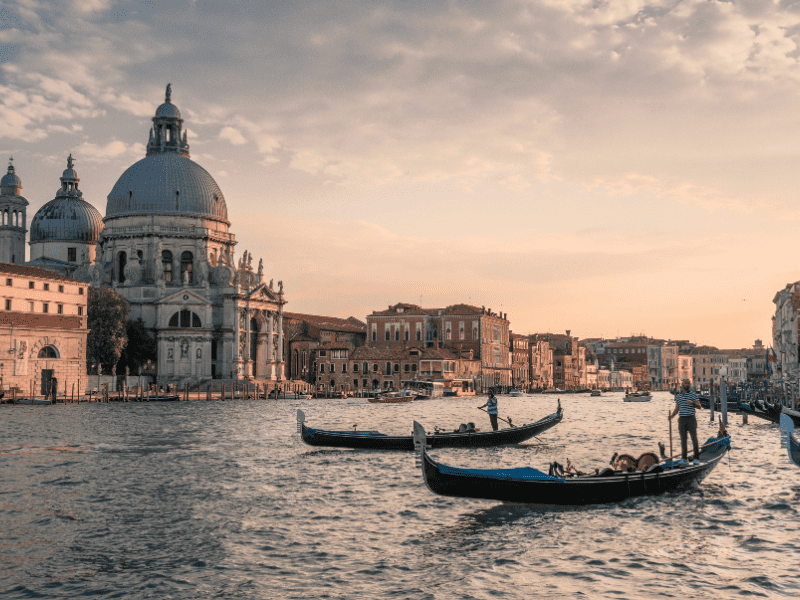There are so many tourist attractions in Venice that knowing where to start can be overwhelming. Almost everywhere you turn to there is something remarkable to feed your eyes with.
Venice consists of six different districts, each boasting unique and fantastic traits. In addition, there are also beautiful islands every tourist would wish to experience.
To ensure you enjoy your trip to this unique location, we have lined up a list of the 20 most amazing tourist attractions to visit in Venice. The very first on the list is one you will certainly recognize:
Our Top Tourist Attractions to Visit in Venice
St. Mark’s Basilica
St. Mark’s Basilica, the crowning jewel of Venice, stands as a testament to the city’s rich history and religious significance. Dating back to the 9th century, this awe-inspiring church is adorned with intricate mosaics, depicting biblical stories and showcasing the city’s Byzantine influences. Not only is it a visual delight, but St. Mark’s Basilica also holds relics of St. Mark, the city’s patron saint.
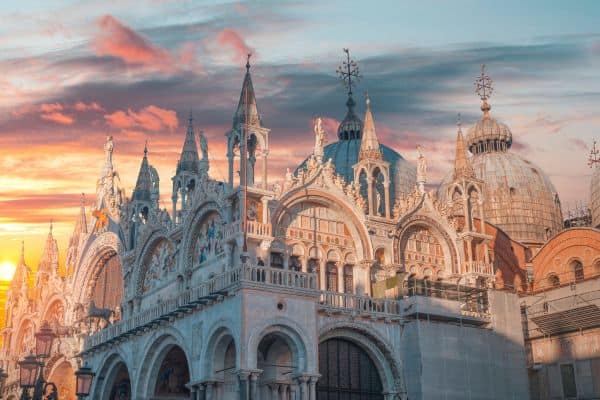
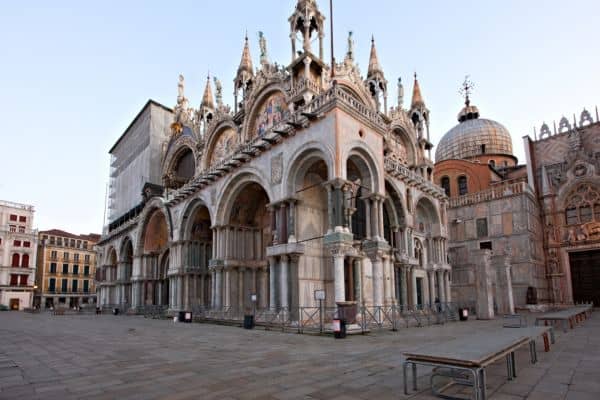
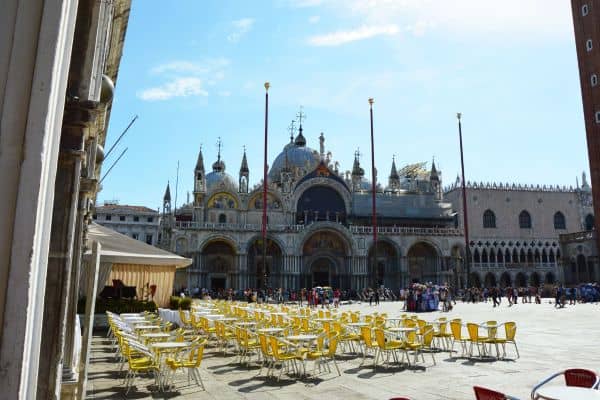
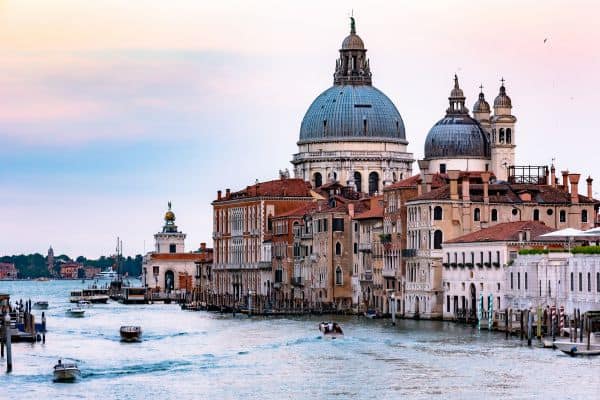
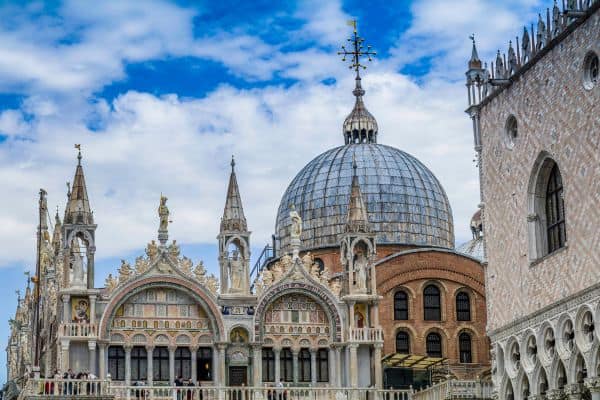
The basilica’s architecture, a blend of Byzantine, Gothic, and Renaissance styles, captures the essence of Venice’s diverse cultural heritage. Visitors can explore the Pala d’Oro, a stunning golden altarpiece, and ascend to the terrace for panoramic views of the city.
Piazza San Marco
Piazza San Marco, the heart of Venice, is an open-air museum showcasing the city’s grandeur. Surrounded by architectural marvels, including the iconic Doge Palace and St. Mark’s Basilica, this public square offers a captivating blend of history and aesthetics. Napoleon once hailed it as the world’s best drawing room, solidifying its status as a global treasure.
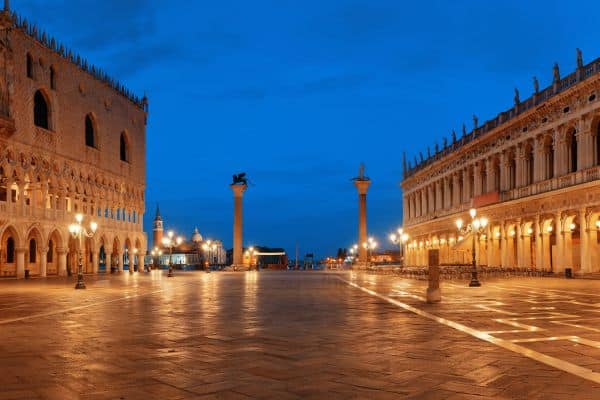
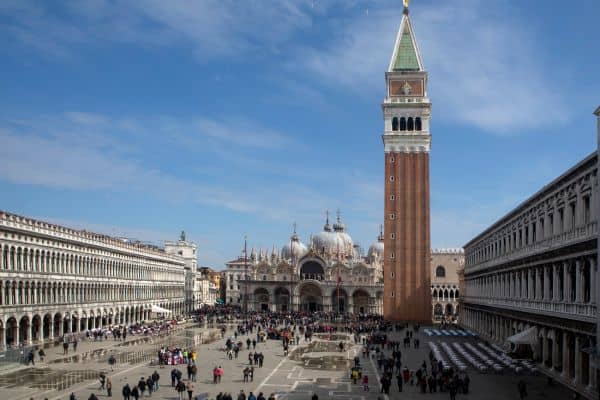
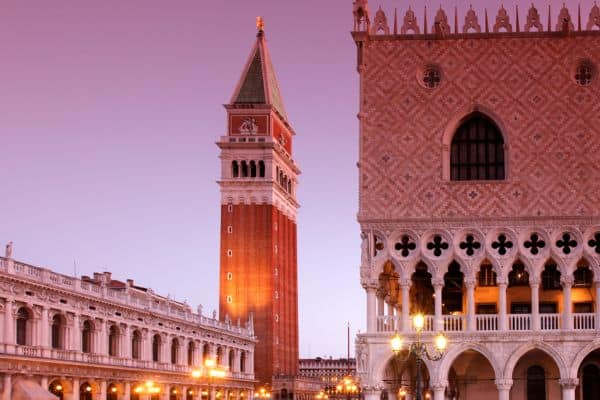
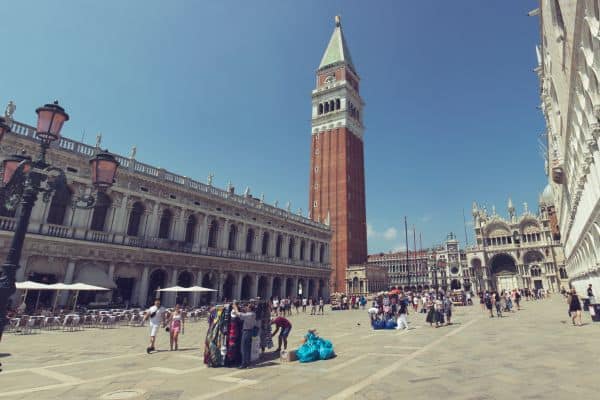
Standing at a mere 90cm above sea level, the square provides a unique perspective of Venice’s intricate relationship with water. Visitors can witness the magical interplay between architecture and aquatic surroundings, immersing themselves in the timeless charm of Piazza San Marco.
Palazzo Ducale (Doge Palace)
Palazzo Ducale, with its Gothic architecture, is a living testament to Venice’s political and cultural history. Once the seat of the Doge, the palace now opens its doors as a museum, allowing tourists to traverse the opulent chambers where decisions shaping the Republic of Venice were made.
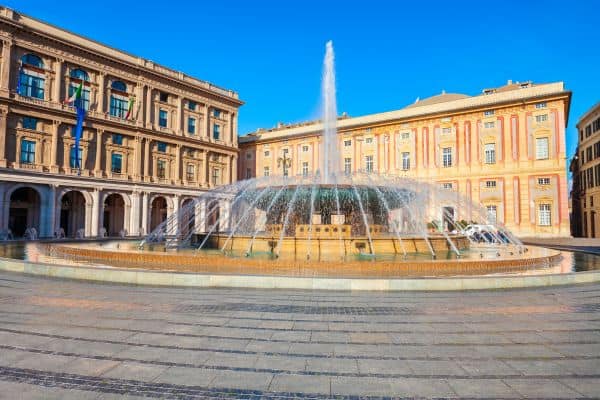
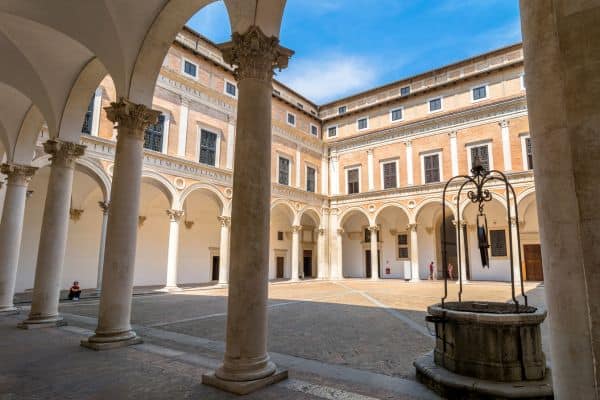
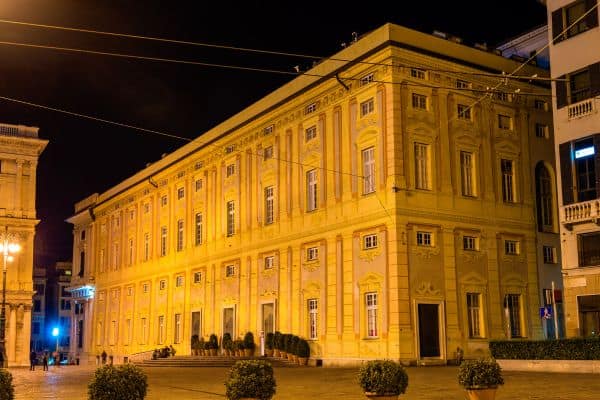
The Bridge of Sighs, connecting the palace to the prisons, adds a romantic touch to the visit. As visitors explore the Doge’s apartments and the institutional chambers adorned with masterpieces by Tintoretto and Veronese, they gain insights into the intricate governance structure that defined Venice’s golden era.
Grand Canal
Venice’s lifeline, the Grand Canal, stretches four kilometers, dividing the city into two halves connected by a network of minor water channels. This bustling waterway provides an authentic Venetian experience as vaporettos, gondolas, and water taxis navigate its course. The grandeur of the canal is amplified by the architecture lining its banks, showcasing a splendid array of palaces, churches, and residences.
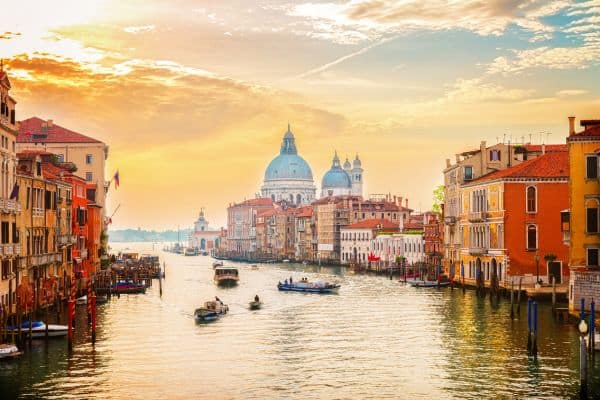
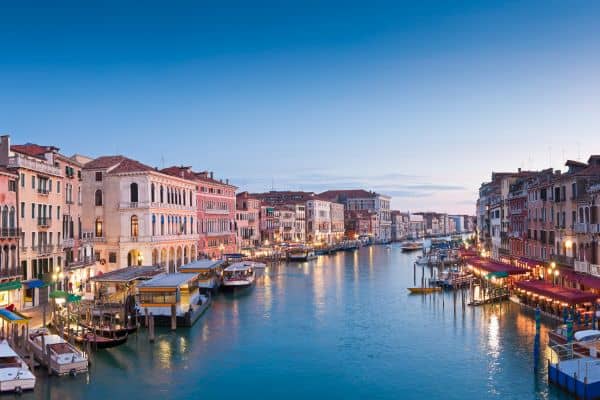
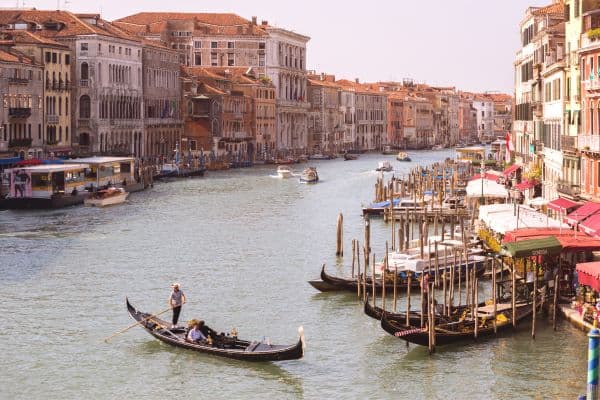

The Grand Canal is at the top of any list of most important tourist attractions to visit in Venice. This iconic waterway serves as a visual narrative of Venice’s economic and cultural prowess during the Renaissance. Tourists can embark on a vaporetto ride, experiencing the lively atmosphere and architectural splendor, as historic buildings such as Ca’ d’Oro and Palazzo Grassi unfold before their eyes.
Ponte di Rialto (Rialto Bridge)
The oldest among the four bridges spanning the Grand Canal, Ponte di Rialto is a testament to Venice’s engineering prowess. Constructed between 1588 and 1591, it replaced a wooden bridge and has since become an iconic symbol of the city. Crossing the bridge, visitors are greeted with a bustling marketplace, showcasing Venetian craftsmanship and local goods.
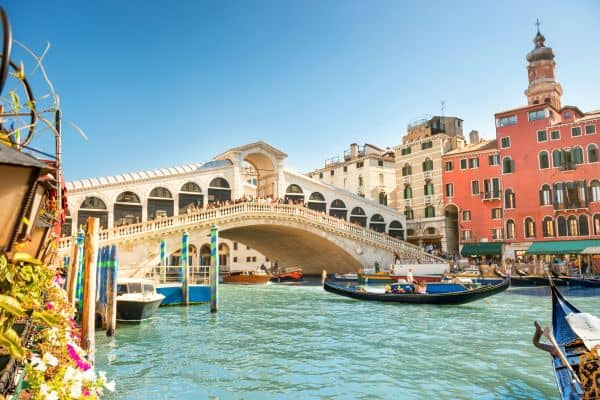
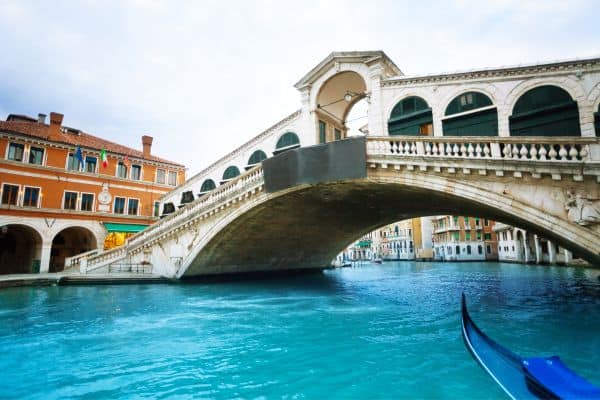
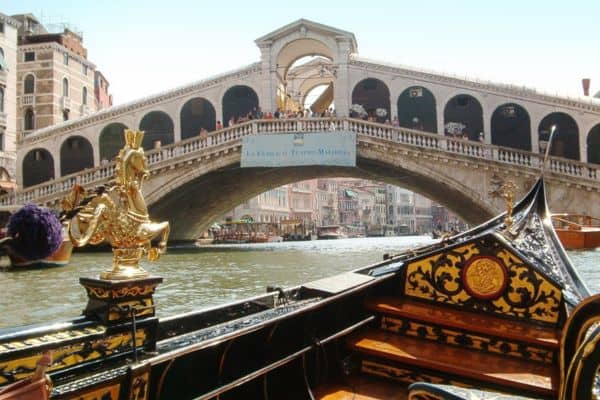
Ponte di Rialto’s architectural marvel is complemented by a panoramic view of the Grand Canal, making it a favorite spot for photographers and romantics alike, and certainly one of the most iconic tourist attractions to visit in Venice. The bridge’s shops and stalls invite tourists to explore a vibrant market atmosphere while relishing the historical significance embedded in its arches and facades.
Torre dell’Orologio (Clock Tower)
The Torre dell’Orologio, or Clock Tower, stands as a timeless sentinel in St. Mark’s Square, offering both historical fascination and functional charm. This majestic structure, with its intricate clock face and bronze figures, has been telling time in Venice since the late 15th century.
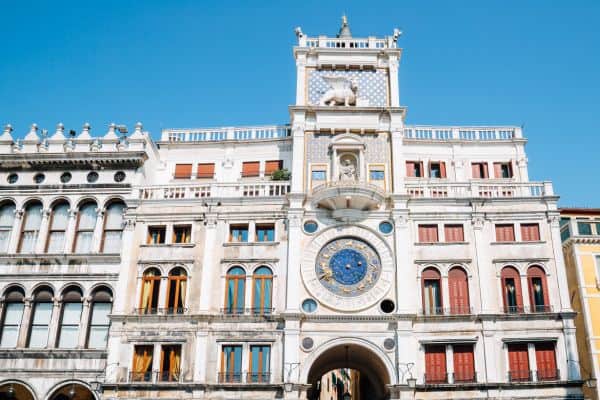
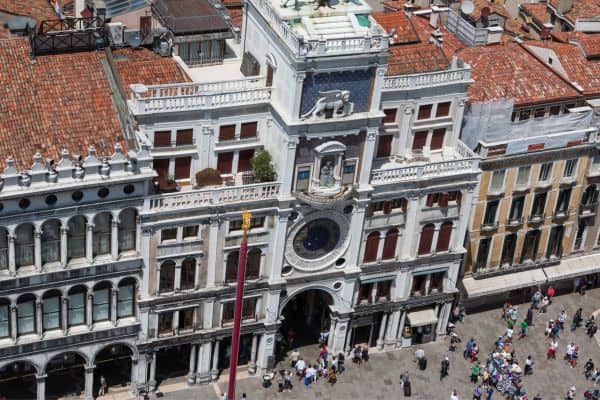
As one of the few remaining Renaissance clock towers in the world, the Torre dell’Orologio allows visitors to witness its inner workings during guided tours, revealing the ancient mechanism responsible for the clock’s accuracy. The enchanting ambiance of the square is heightened as the tower’s astronomical clock chimes, providing an immersive journey through Venice’s timekeeping legacy.
Campanile di San Marco
Dominating Venice’s skyline, St. Mark’s Campanile, at a towering height of 99 meters, is an architectural marvel and a symbol of the city’s grandeur. Originally built in the 9th century as a watchtower, it underwent various transformations before attaining its current form in the 16th century.
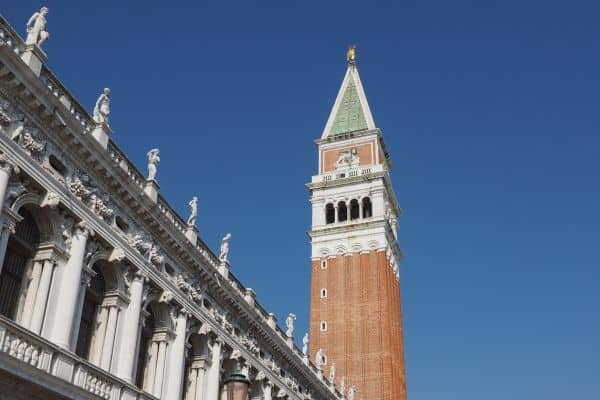
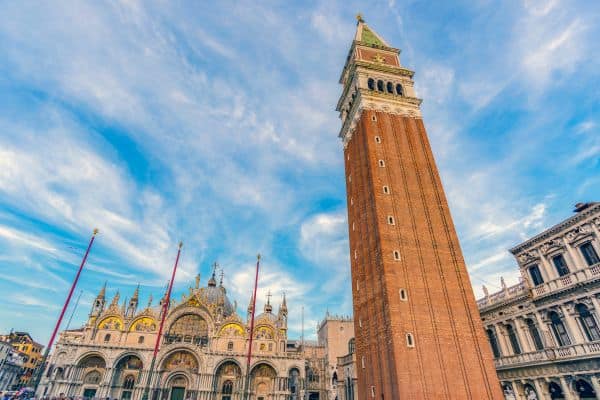
The panoramic views from the Campanile’s terrace offer a breathtaking vista of Venice and its intricate waterways. Visitors can trace the city’s layout from above, spotting landmarks such as St. Mark’s Basilica, the Doge Palace, and the Grand Canal, among many other renown tourist attractions to visit in Venice. The ascent to the top serves not only as a historical journey but also as a personal connection with Venice’s ever-evolving skyline.
Santa Maria della Salute
Santa Maria della Salute, a masterpiece of Baroque architecture, emerges as a poignant tribute to Venice’s resilience in the face of adversity. Constructed in gratitude for the city’s deliverance from the 1630 plague, the church stands as a symbol of hope and thanksgiving.
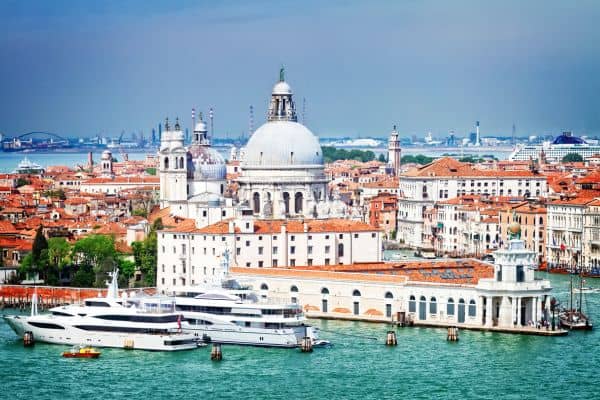
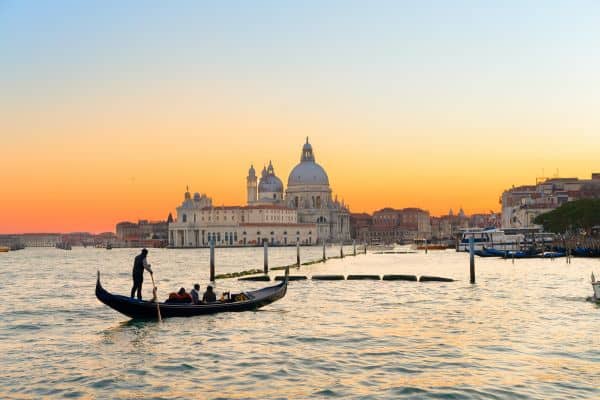
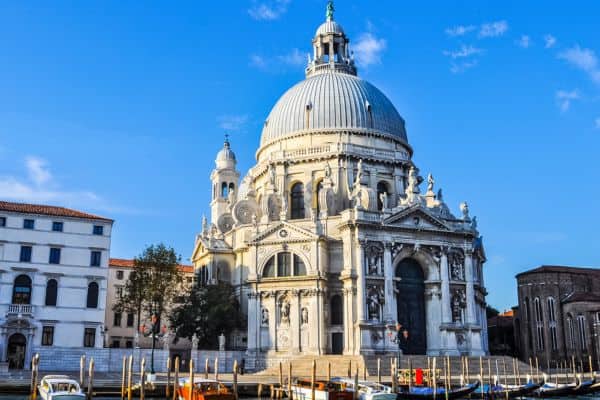
The interior of Santa Maria della Salute captivates visitors with its intricate marble decorations and a stunning high altar. A stroll through the church provides an intimate encounter with the masterpieces of renowned artists such as Titian and Tintoretto, underscoring the church’s significance as a repository of Venetian artistic heritage.
Teatro La Fenice
Teatro La Fenice, translating to “The Phoenix,” rises from the ashes time and again, making it a metaphor for Venice’s enduring cultural spirit. This opera house, with its opulent interiors and grand performances, continues to enchant audiences and retain its status as one of the leading cultural institutions in Italy.
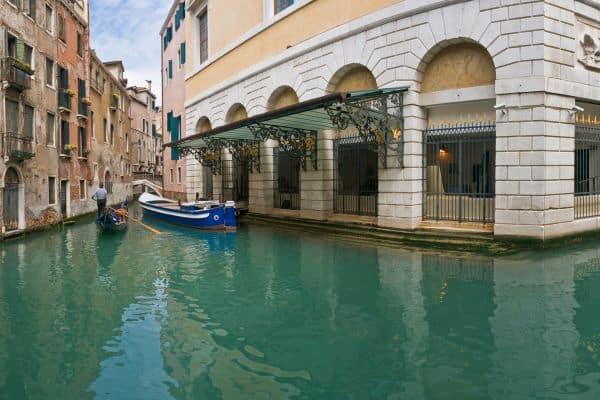
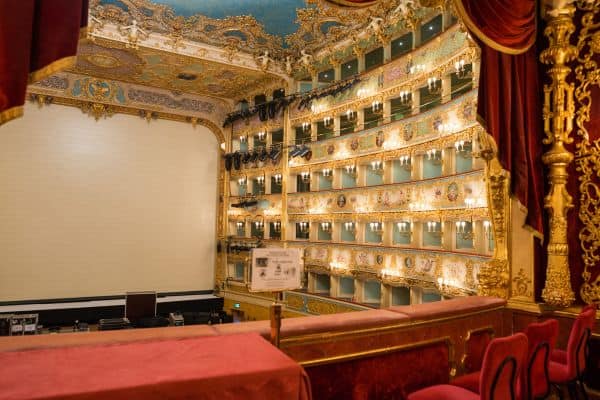
The theater’s storied past, including multiple reconstructions after fires, adds to its allure. A visit to Teatro La Fenice immerses tourists in the world of opera, showcasing productions that echo the resiliency and passion embedded in Venice’s artistic soul.
Scuola Grande di San Rocco
Scuola Grande di San Rocco, an architectural gem nestled in the heart of Venice, serves as a testament to the city’s intersection of devotion, culture, and art. Founded in the 16th century, this confraternity hall boasts an impressive collection of artworks by Tintoretto, offering a visual feast for art enthusiasts.
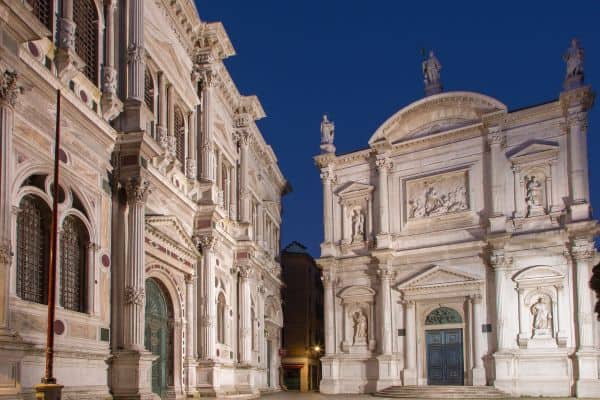
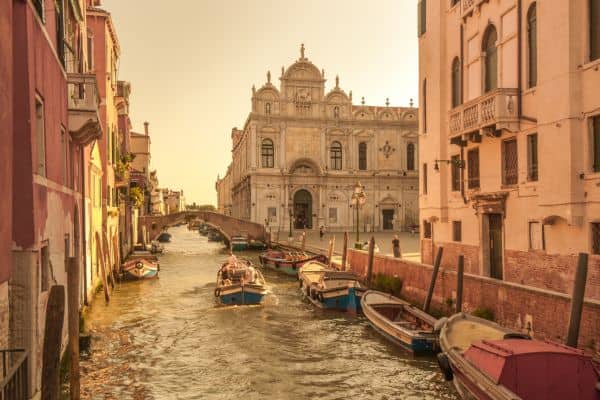
The Scuola’s architectural design, featuring intricate decorations and elegant spaces, reflects the wealth and influence of its patrons. Visitors can marvel at Tintoretto’s masterpieces, including the dramatic Crucifixion and the glorious ceiling paintings, while immersing themselves in the historical context of Venice’s religious and artistic evolution.
Murano and Burano
Murano and Burano, two enchanting islands near Venice, each offer a unique and captivating experience for tourists seeking a break from the city’s lively streets. Murano, renowned for its glassmaking traditions, invites visitors to witness skilled artisans crafting exquisite glassware through centuries-old techniques.

In contrast, Burano captivates with its vibrant, pastel-colored houses lining picturesque canals. Known for its lace-making heritage, Burano exudes a serene charm that beckons travelers to explore its narrow streets and savor the authenticity of local life.
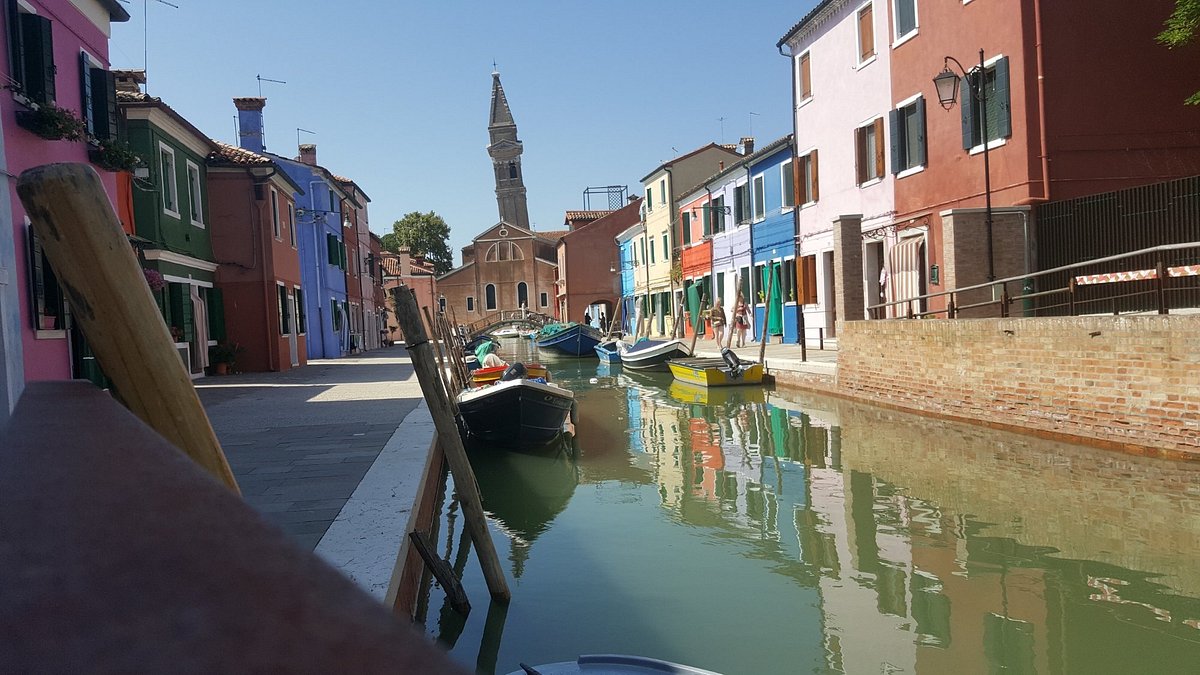
Both islands, with their distinct cultural offerings, provide a delightful escape for those yearning to discover Venice beyond its well-trodden paths.
Ca’ d’Oro
Ca’ d’Oro, gracefully overlooking the Grand Canal, stands as a beacon of Venetian opulence and artistic splendor. Built in the 15th century, this palatial residence has been transformed into a museum, housing the exquisite art collection of Baron Giorgio Franchetti.
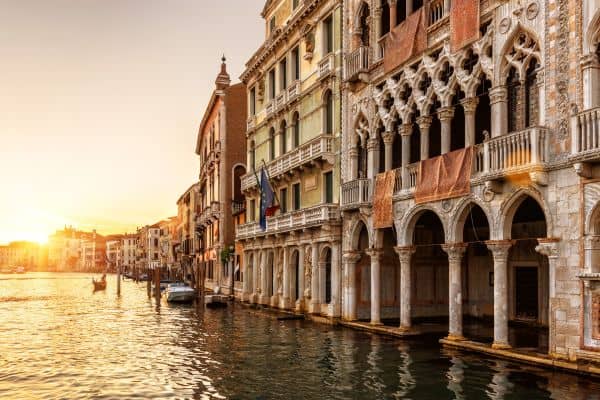
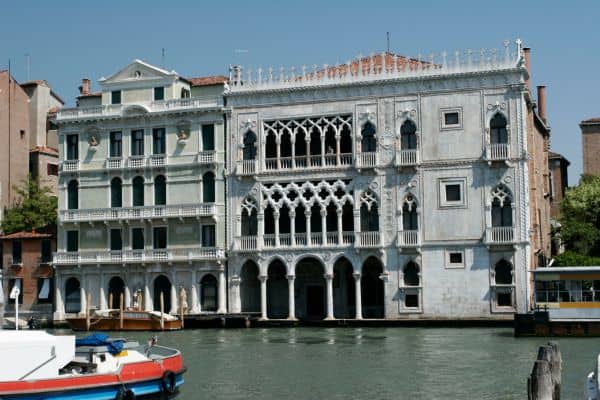
The exterior of Ca’ d’Oro, adorned with delicate Gothic tracery and ornate details, serves as a prelude to the treasures within. As visitors explore the museum’s opulent rooms, they encounter a diverse array of artworks, including paintings, sculptures, and decorative arts, providing a comprehensive immersion into the refined tastes and cultural legacy of Venice’s aristocracy.
Ghetto and Museo Ebraico di Venezia
For those intrigued by Jewish history and culture, the Ghetto and Museo Ebraico di Venezia offer a compelling journey into Venice’s Jewish heritage. Established in the 16th century as one of Europe’s first ghettos, this area became a center for Jewish life and commerce.

The museum, situated in the heart of the former ghetto, presents a rich tapestry of artifacts, manuscripts, and historical documents, providing insights into the daily lives and traditions of Venice’s Jewish community. Visitors can explore synagogues adorned with elaborate decorations, stroll through the ancient cemetery, and gain a nuanced understanding of the resilience and contributions of Venetian Jews.
Peggy Guggenheim Collection
Nestled along the Grand Canal, the Peggy Guggenheim Collection beckons art enthusiasts with its eclectic display of contemporary masterpieces. Housed in the 18th-century Palazzo Venier dei Leoni, the museum showcases the personal art collection of Peggy Guggenheim, a prominent patron of modern art.

The collection spans various artistic movements, featuring works by iconic artists such as Jackson Pollock, Pablo Picasso, and Max Ernst. With its avant-garde ambiance and diverse exhibits, the museum offers a dynamic exploration of 20th-century art, making it a magnet for art lovers from around the world.
Gallerie dell’Accademia
Gallerie dell’Accademia stands as a treasure trove for art aficionados, housing an unparalleled collection of Venetian paintings dating back to the 14th century. Situated along the Grand Canal, the museum boasts the most extensive collection of pre-19th-century Venetian art in the world.

The galleries showcase masterpieces by renowned artists like Giovanni Bellini, Titian, and Tintoretto, providing a comprehensive overview of Venice’s artistic evolution. Visitors can marvel at the intricate details of religious and secular artworks, gaining profound insights into the cultural, social, and religious fabric that shaped Venetian art across the centuries.
Santa Maria Gloriosa dei Frari
Santa Maria Gloriosa dei Frari, often hailed as the largest church in Venice, stands as a testament to the city’s religious fervor and architectural prowess. Initially built in the 13th century, the church underwent a transformative reconstruction in the 15th century, adopting a Gothic style that enhances its grandeur.
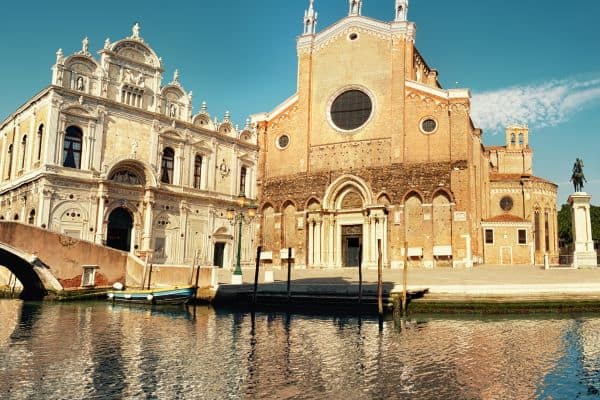
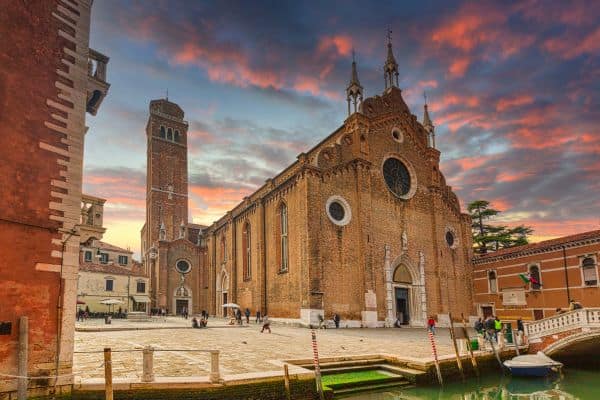
The simplicity and elegance of Santa Maria dei Frari’s design, both exterior and interior, captivate visitors. As they explore the vast nave and side chapels adorned with masterpieces by artists like Titian and Giovanni Bellini, tourists are immersed in the spiritual and artistic legacy that defines this monumental church.
Palazzo Rezzonico
Palazzo Rezzonico, the grand residence of the Rezzonico family, stands proudly on the banks of the Grand Canal, inviting visitors into a world of 18th-century Venetian opulence. This palazzo, now a museum, offers a rare glimpse into the aristocratic lifestyle through its meticulously preserved architecture and art collections.
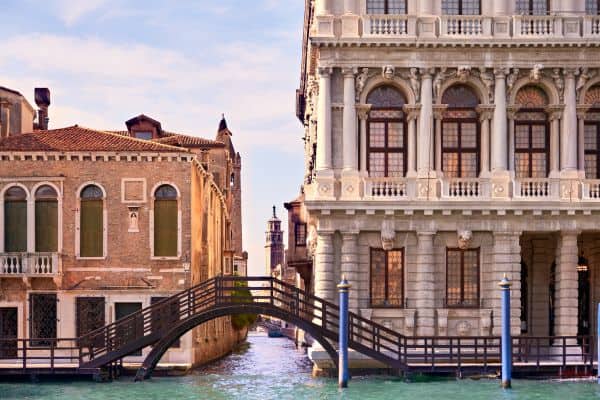
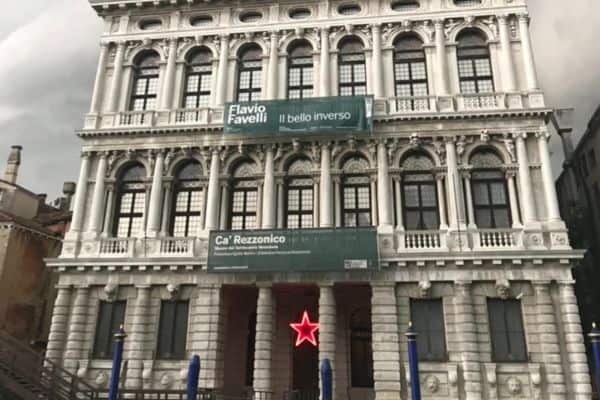
The exterior of Palazzo Rezzonico, with its elegant façade and ornate details, sets the stage for a journey through the lavish interiors. As visitors meander through salons adorned with period furniture and opulent artworks, they gain a nuanced understanding of the cultural refinement and artistic patronage that characterized Venice’s aristocracy during the 18th century.
Santa Maria dei Miracoli
Santa Maria dei Miracoli, an architectural gem along the Grand Canal, stands as a testament to both religious devotion and aesthetic perfection. Built in six years between 1675 and 1681, this church’s exquisite marble façade and harmonious proportions make it a masterpiece of Venetian Renaissance architecture.
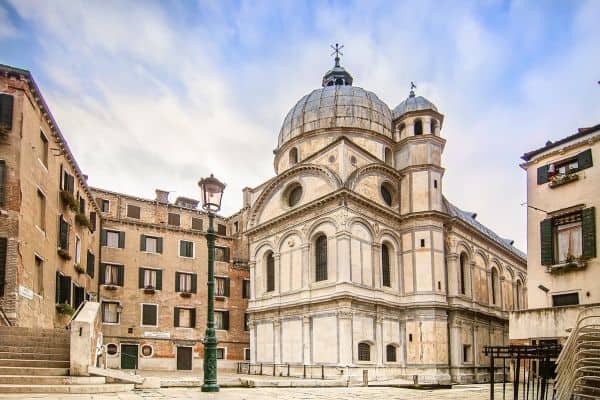
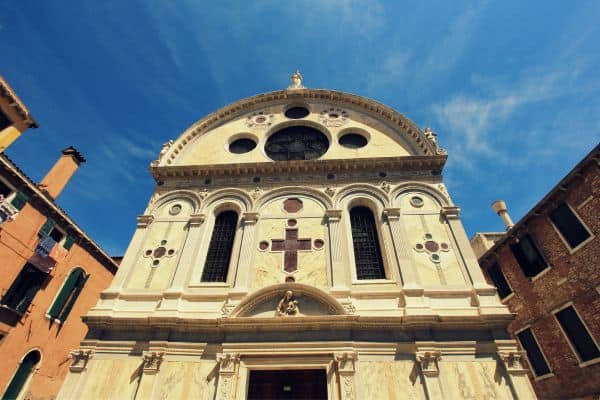
The church, conceived to house a statue of the Virgin Mary, now captivates visitors with its intricate interior embellishments. The soft glow of the marble, the delicate stucco work, and the harmonious color palette create an ambiance of serenity and beauty. As visitors step into this divine sanctuary, they witness firsthand the unmatched elegance that defines Santa Maria dei Miracoli.
Lido
Lido, an 11-kilometer-long island, beckons tourists with its sandy shores and vibrant atmosphere. Beyond being a picturesque escape, Lido boasts a rich history, having hosted the Venice Film Festival since 1932, making it a cinematic haven for movie enthusiasts.

While the island is renowned for its film festivities, it offers much more, including historical sites like the Murazzi, a protective barrier against the Adriatic Sea. Visitors can bask in the sun on Lido’s sandy beaches, indulge in watersports, or explore the island’s charming streets, combining leisure with a touch of cinematic glamour.
Torcello Island
Torcello Island, a small and tranquil oasis in Venice’s lagoon, unfolds as a haven for those seeking a peaceful retreat. With few residents, Torcello provides a serene escape from the bustling crowds, offering visitors an authentic experience of Venetian island life.
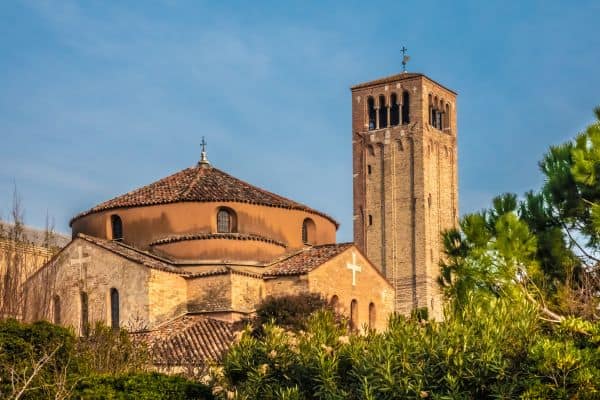
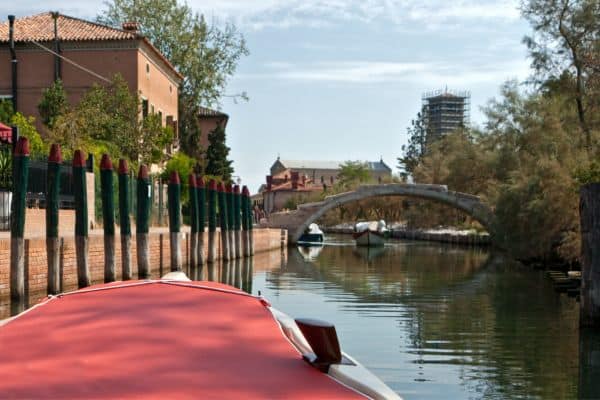
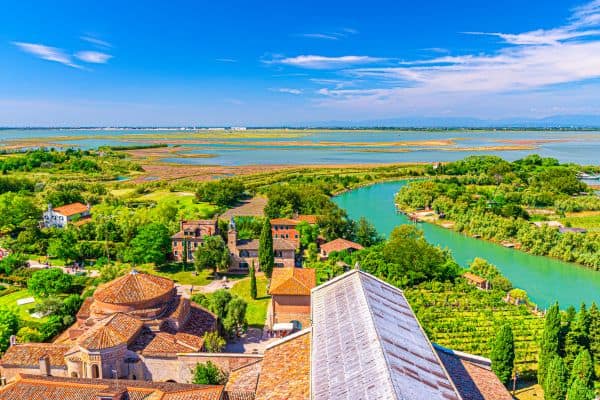
Located near Burano, Torcello entices with its historical sites, including the Cathedral of Santa Maria Assunta, adorned with ancient mosaics. The island’s minimalistic charm and lush greenery make it a favorite among nature enthusiasts, providing a refreshing contrast to the vibrant scenes of Venice’s more frequented locales. As visitors explore Torcello’s quiet streets and immerse themselves in its timeless tranquility, they discover a hidden gem that complements the dynamic allure of the Venetian archipelago.
Discover More Amazing Tourist Attractions to Visit in Venice
Of course this is not an all-inclusive list of interesting tourist attractions to visit in Venice and really far from it. Venice is such an amazing place for walking and exploring and there are so many small little hidden gems around every corner.
There are so many engaging ways to explore Venice, whether it is a good tour, a walking tour, a canal cruise or any other number of amazing immersive experience – please allow time during your trip to Venice to take a short tour.
See Venice Tours and Excursions available at TripAdvisor.
See more Venice Tours and Excursions available at GetYourGuide.
Explore Beyond Venice
If you love Venice then you are probably going to appreciate some of the neighboring destinations, all of which are easily accessible as a day trip from Venice by train. There are a handful of train connections from Venice that open up a myriad of day-trip possibilities, allowing travelers to explore the rich cultural tapestry of northern Italy. Whether captivated by the romantic allure of Verona, the gastronomic delights of Bologna, or the artisanal charm of Murano and Burano, each destination promises a unique and memorable experience within a day’s reach from Venice. Read more about exploring beyond Venice here.
Recent Posts
Here are seven great hotels in Helsinki for train travelers. All seven hotels are located near the train station in Helsinki, making them all convenient travel options that will be hard to beat...
Train Trips from Venice: Exploring Italy by Rail Italy is a country of breathtaking landscapes, rich history, and vibrant culture, and there's no better way to explore its treasures than by train....
